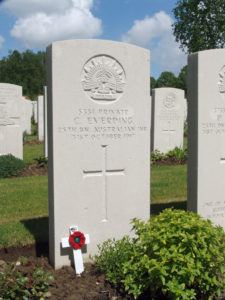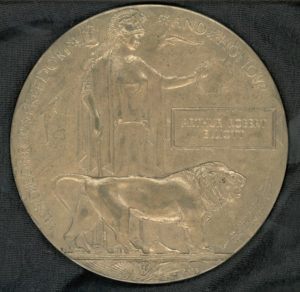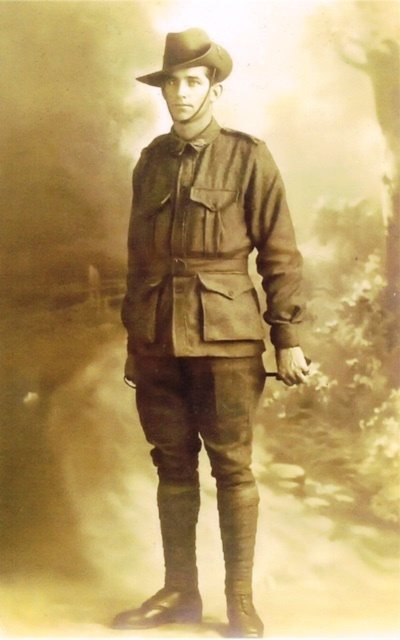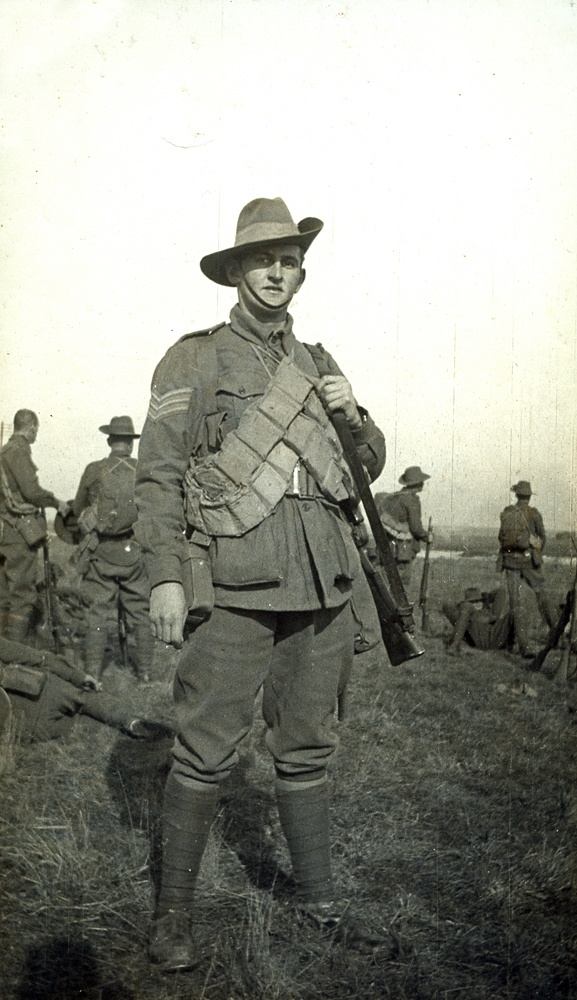A century ago the third Battle of Ypres was in full swing, with Australian soldiers in action at Polygon Wood, Broodseinde Ridge and Passchendaele.
Private Waterman Alexander Brown of Ipswich, and Private Norman Blank of Esk – members of the 25th Battalion A.I.F. were wounded on Thursday 4 October 1917 during the Battle of Broodseinde. 239 men and 12 officers of the 25th Battalion became casualties during the Broodseinde action. The fighting began before dawn with soldiers encountering fierce resistance as they advanced over boggy ground, using their bayonets and firing from the hip. The battle was a victory for Allied forces although the loss of life was staggering. 6423 Australians died that day. Brown and Blank both died of wounds 2 days later on 6th October 1917.
It was the practice at this time for military authorities to telegram the grim news to the local mayor who would then deliver the message to the next of kin. On Saturday 20 October Mayor Cameron dutifully visited the Brown residence on Warwick Road, Ipswich to inform Mrs Margaret Brown (widow) of her son’s death.
On the day that Waterman died, thousands of miles away in Europe, on Saturday 6th October 1917 it was ironic that the Queensland Times printed a poem by “Table Talk” that included the lines: ‘the name of the soldier’s mother, Is last on the soldiers lips’. The same could be said for Waterman’s mother who never stopped mourning her son and remembering him. Each year until she died she inserted an In Memoriam notice in the Queensland Times to commemorate his death.
His father Gaius Frederick Brown had been proprietor of the Harp of Erin pub in Brisbane Street from 1890-1893. Since Waterman (or Watty as he was known) was born in 1891 he would have lived in the old pub for a time and was quite probably born there. His younger brother George was also a World War I soldier.
By October 1917 the tide of war in Europe was beginning to turn but there were many more casualties, some from Ipswich. Private Arthur Simmons of North Ipswich died on the battlefield on 4 October 1917. Christopher Everding of the Bundamba area, also of the 25th Battalion, was killed in action in Belgium on 31 October 1917.

Christopher Everding, headstone at Hooge Crater Cemetery, Zillebeke, Belgium, 2015 – Image courtesy of Picture Ipswich
Arthur Robert Elliott of One Mile Estate died of wounds in Etaples, France a few days earlier on 22 October.

Dead Man’s Penny issued for Arthur Robert Elliott of One Mile Estate, Ipswich, 1922 – Image courtesy of Picture Ipswich
Arthur George Bennett of Lyon Street, Ipswich was wounded on 21 October. Fortunately he recovered and returned to Australia in 1918. David Victor Finimore of Arthur Street received a shot wound to his left leg on the 12th but lived to fight on until 1918 only to die of wounds in France.
Information taken from:
Australian War Memorial. https://www.awm.gov.au/
National Archives of Australia. http://naa.gov.au/
Picture Ipswich. http://picture.ipswich.qld.gov.au
Queensland Times, Saturday 6 October 1917, p.5.
Queensland Times, Monday 22 October 1917, p.6.


